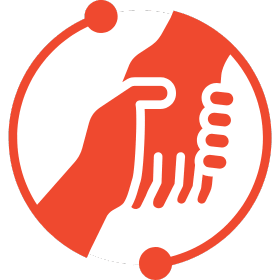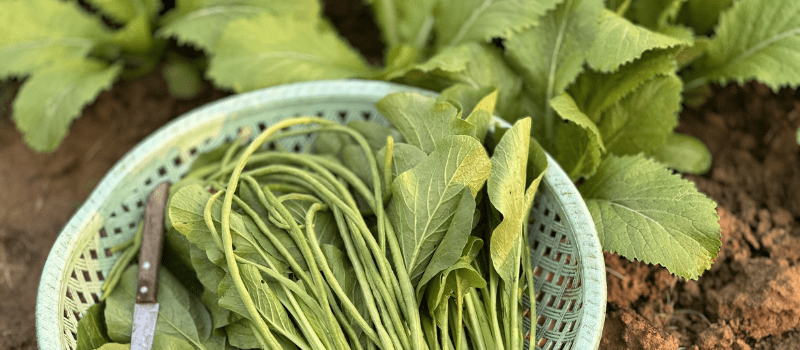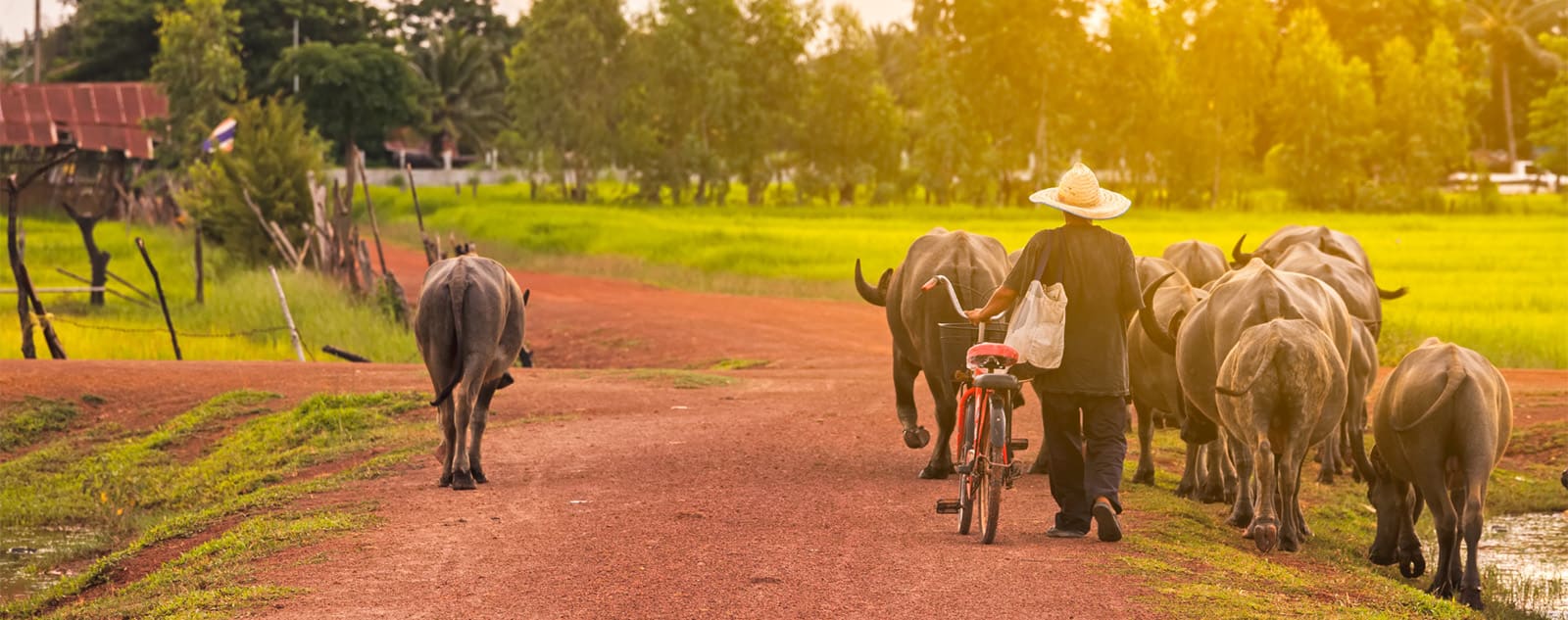Written by Tanja Kisslinger, Director of Communications, VWB. Special thanks to VWB Board Member, Dr. Martine Dubuc (DVM)—formerly Canada's Chief Food Safety Officer and Canada's delegate to the World Organisation for Animal Health (WOAH)—for reviewing and providing expert insights for this article.
Each day, an estimated 1.6 million people fall ill due to unsafe food, while globally, foodborne diseases cost low- and middle-income countries an estimated US$110 billion each year (WHO, 2025). Behind those numbers are lives lost, communities impacted, and mounting pressure on health systems and economies alike.
This is why World Food Safety Day, observed annually on June 7, isn't just an observance—it’s a call to action. Ensuring safe, nutritious food is as essential to preventing illness, as it is to protecting public health, sustaining livelihoods, and securing global food systems. And in today’s interconnected world, meeting this challenge requires more than traditional safety checks. It demands a One Health approach—one that recognizes the intricate links between the health of animals, people, and the environment.
This blog explores how One Health strategies can strengthen food safety systems, improve public health outcomes, and reduce the risk of zoonotic disease. We’ll highlight the importance of cross-sector collaboration, draw lessons from Canada’s integrated response systems, and examine emerging challenges like antimicrobial resistance and climate change.
I. Why Safe Food Starts with Healthy Systems
Zoonotic Risks in the Food Chain
A significant proportion of human infectious diseases are zoonotic, meaning they originate in animals and can be transmitted to humans. These pathogens can enter the food chain through multiple pathways:
- Animal waste contaminating fruits and vegetables during production.
- Improper handling or processing of meat and poultry, leading to contamination with pathogens like Salmonella, E. coli, and Campylobacter.
- Seafood exposed to bacteria, viruses, or parasites from polluted waters.
- Unpasteurized milk containing harmful bacteria such as Listeria and Brucella.
Understanding animal reservoirs of these pathogens and their transmission pathways is crucial for developing effective food safety interventions.
Environmental Impacts on What We Eat
Environmental factors significantly influence food safety. Climate change, deforestation, and pollution affect the prevalence and distribution of foodborne pathogens. Rising temperatures, for example, can promote the growth of certain bacteria in food, while extreme weather events can disrupt food production and increase the risk of contamination.
The One Health approach addresses these environmental factors by promoting sustainable agricultural practices, reducing pollution, and mitigating the impacts of climate change.
What the Research Tells Us
A growing body of research highlights the value of a One Health approach in strengthening food safety. A systematic review in The Lancet emphasized its effectiveness in preventing and controlling zoonotic diseases, including those transmitted through food (Gibbs, 2014).
Additionally, integrated surveillance systems—those that monitor both animal and human health data—are identified as particularly effective in improving early detection and response to foodborne outbreaks (Grein et al., 2005).
II. Working Together for Safer Food
Breaking Down Silos
One of the core principles of the One Health approach is cross-sector collaboration. This means bringing together experts from different disciplines, including veterinary medicine, human health, environmental science, agriculture, and food safety, to address food safety challenges collectively.
Traditionally, these sectors have operated in silos, with limited communication and coordination.
However, effective food safety requires a coordinated and integrated approach. For example, veterinarians play a crucial role in identifying and controlling zoonotic diseases in animals, while public health officials investigate foodborne outbreaks and implement control measures. Environmental scientists monitor environmental contamination and assess the impact of climate change on food safety.
Data Sharing and Surveillance
Effective cross-sector collaboration also requires data sharing and coordinated surveillance systems. Sharing data on animal diseases, human illnesses, and environmental contamination can help identify emerging threats and track the spread of foodborne pathogens. Integrated surveillance systems provide early warning of outbreaks, allowing for rapid intervention and preventing widespread illness.
Joint Training and Research
Joint training and research initiatives can also promote collaboration and build capacity to address food safety challenges. By training professionals from different sectors together, we foster a shared understanding of the One Health approach and promote effective teamwork. Collaborative research projects can also address complex issues that require expertise from multiple disciplines.
III. Canada’s Model: What’s Working, and Why
Canada has made significant strides in integrating One Health principles into its food safety systems. The Canadian Food Inspection Agency (CFIA) works closely with provincial and territorial governments, as well as other federal departments, to ensure food safety across the country.
Key elements of Canada’s approach include:
- Integrated surveillance: Monitoring animal and human health data to detect and respond to outbreaks.
- Cross-sector collaboration: Coordinating with government agencies and industry to enforce food safety regulations.
- Risk-based focus: Prioritizing the highest threats to public health through targeted interventions.
- Traceability systems: Enabling rapid identification and recall of contaminated food products.
- AMR monitoring: Tracking antimicrobial resistance (AMR) in both animals and humans to prevent the spread of resistant bacteria.
How Digital Tools Are Powering Collaboration
Launched in 2020 under the leadership of the CFIA and the Public Health Agency of Canada, the Canadian Food Safety Information Network (CFSIN) represents a major digital innovation in Canada’s food safety infrastructure. CFSIN connects federal, provincial, and territorial (FPT) organizations involved in food safety, creating a collaborative national network supported by a suite of secure digital tools and services.
CFSIN’s origins can be traced to the tragic 2008 Listeria outbreak, which led to a national call for more integrated systems. Today, CFSIN strengthens Canada’s ability to detect, prevent, and respond to food safety incidents by enabling real-time data sharing, collaboration among food safety experts, and a proactive, science-based approach to risk mitigation.
Key features of the CFSIN platform include:
- Collaboration Tools: Secure spaces for FPT partners to exchange knowledge and align priorities.
- Environmental Scanning: A tool that scans global sources to detect emerging food safety risks.
- Surveillance Data Repository: A centralized database for analyzing laboratory testing data across jurisdictions.
- Laboratory Mapping: An inventory of food safety labs to improve coordination and surge response
- Event Management Tools: Support for timely information exchange during food safety emergencies.
By fostering transparency and collaboration, the CFSIN enhances Canada's capacity to manage foodborne risks and demonstrates the value of digital integration in modern One Health-based food safety systems.
What the World Can Learn from Canada
Several elements of Canada’s integrated food safety response systems can be applied globally, including:
- Developing integrated surveillance systems that monitor animal and human health data.
- Promoting cross-sector collaboration through joint committees and shared data platforms.
- Implementing risk-based approaches to food safety.
- Developing robust traceability systems is essential for ensuring food safety and preventing the spread of contaminated products.
IV. What’s Threatening Our Food—and How We Can Respond
The Rising Risk of AMR
AMR is a major threat to both human and animal health. The overuse and misuse of antimicrobials in agriculture contribute to the development of resistant bacteria, which can enter the food chain and cause infections in humans that are difficult to treat.
To mitigate the growing threat of AMR, a multifaceted One Health approach is essential. Strategies include:
- Promoting responsible antimicrobial use in agriculture.
- Enhancing surveillance of antimicrobial resistance in animals and humans.
- Investing in research and development of alternative therapies.
- Strengthening hygiene and biosecurity measures in farms and food processing facilities.
When Climate Disrupts the Food Chain
Climate change significantly impacts food safety by influencing the prevalence and distribution of pathogens and disrupting food systems. One Health strategies to address climate change include:
- Encouraging the adoption of sustainable agricultural practices.
- Implementing stricter food safety regulations to address climate-related risks.
- Investing in climate-resilient food systems that can withstand climate impacts.
Global Trade, Global Consequences
The globalization of food trade has increased the risk of foodborne outbreaks spreading across borders. Contaminated food products can quickly reach consumers in different countries, making it challenging to contain outbreaks.
One Health strategies to address globalization include:
- Enhancing collaboration between countries on food safety issues.
- Strengthening traceability systems to enable rapid identification and recall of contaminated food products, both locally and across borders.
- Working toward harmonizing food safety standards across countries.
V. A Call to Action from Farm to Fork
Strengthening food safety systems through a One Health lens isn’t just good practice—it’s a global imperative. The health of our food systems is inseparable from the health of people, animals, and the environment. From antimicrobial resistance to climate shocks, the threats we face are interconnected—and so must be our response.
By investing in cross-sector collaboration, integrated surveillance, and sustainable solutions, we can build food systems that are not only safer, but also more resilient and equitable.
As we mark World Food Safety Day, let it be more than a reflection. Let it be a catalyst. Governments, researchers, community leaders, and organizations must come together to advance One Health strategies that safeguard our food, our health, and our future.
References:
- Canadian Food Inspection Agency (CFIA). (2020, November). Strengthening Canada’s response to food safety issues.
- Canadian Food Inspection Agency (CFIA). (2024). Canadian Food Safety Information Network (CFSIN).
- Gibbs, E. P. J. (2014). The One Health approach to zoonoses. The Lancet, 384(9956), 1749-1758.
- Grein, T. W., et al. (2005). Detecting and responding to infectious disease outbreaks: a strategy for integrating existing surveillance systems. The Lancet Infectious Diseases, 5(12), 713-720.
- World Health Organization (WHO). (2022). Food safety.
- World Health Organization (WHO). (2025). World Food Safety Day 2025.
 Join us in protecting food safety through One Health solutions! Healthier animals contribute to cleaner food chains, stronger communities, and a more resilient planet. Donate, volunteer, or subscribe to support disease prevention, protect farmers’ livelihoods, and advance the One Health solutions that keep our food—and our future—safe.
Join us in protecting food safety through One Health solutions! Healthier animals contribute to cleaner food chains, stronger communities, and a more resilient planet. Donate, volunteer, or subscribe to support disease prevention, protect farmers’ livelihoods, and advance the One Health solutions that keep our food—and our future—safe.





